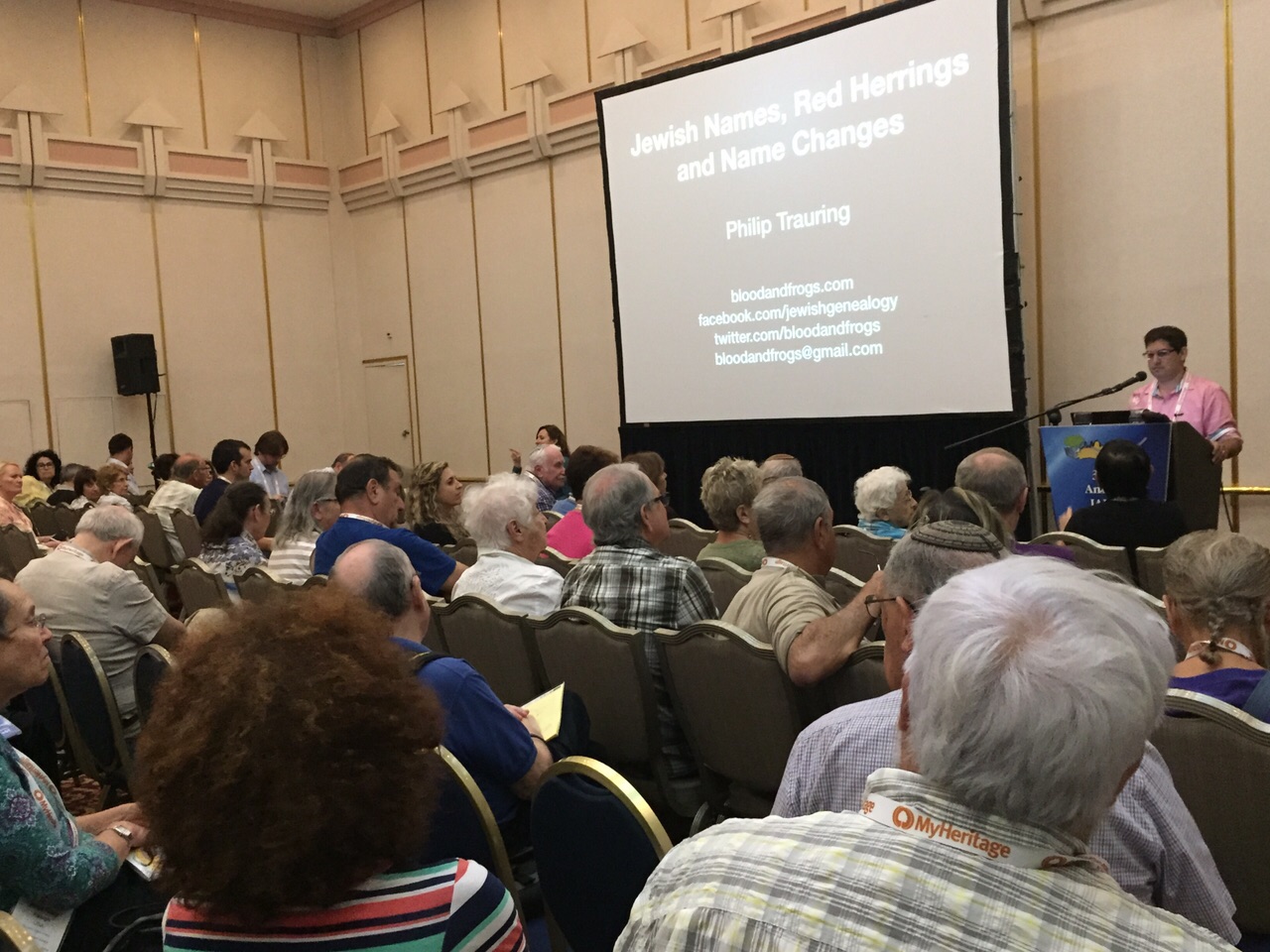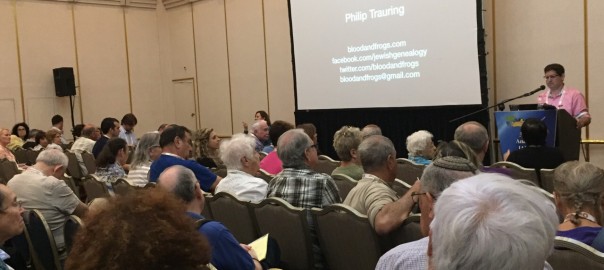Yesterday was day one of the IAJGS International Conference on Jewish Genealogy in Jerusalem. The last time the annual conference was in Jerusalem was 11 year ago, and that was the first genealogy conference I attended. Back then I was less involved in genealogy, although I did volunteer to put together the Souvenir Journal given out to attendees (still available online).
It’s interesting to look back at that journal and notice that there are two letters of approbation at the beginning of the journal, written by then Israeli President Moshe Katsav and then Jerusalem Mayor Uri Lupolianski. Lupolianski was, if I recall correctly, the keynote speaker that year as well. What’s interesting about those two Israeli leaders is that both currently sit in jail – Katsav on rape and sexual harassment charges, and Lupolianski on corruption charges. I suppose that should be disheartening, although on the plus side I guess we can be confident that no one is above the law here in Israel.
This year the keynote speaker was Rabbi Yisrael Meir Lau, the former Chief Rabbi of Israel (and father of the current Chief Rabbi). I think he’s above reproach, perhaps the conference organizers wanted someone they could be sure wouldn’t be in jail by the next conference here (although interestingly enough, the rabbi that served for 10 years in between Rabbi Lau and his son is currently in jail, on corruption charges).
Rabbi Lau’s story is quite amazing (I highly recommend his autobiography Out of the Depths), being one of the youngest survivors of the Buchenwald concentration camp (I believe he was 8) and ending up in Israel where he rose to be Chief Rabbi. He is a charismatic speaker, and I think well received by everyone there.
Earlier in the day I spoke on the topic of Jewish Names, Red Herrings and Name Changes. I was happily surprised to be talking to a packed room.

I hope to publish a summary of my lecture sometime in the future. I made one mistake in my lecture, but I’m glad no one picked up on it…
I also attended several lectures which were excellent. One lecture which I almost missed, but was happy to find at the last minute, was a lecture titled Who Were The European Jewish Refugees in Casablanca During World War II and How Did They Get There? given by Michal Ben Ya’akov. The lecture centered around the work done by Helene Cazes Benatar, a lawyer working in Morocco during WWII, who helped Jewish refugees who flowed into the country from Europe.
Among the thousands of refugees in Morocco during the war was my grandmother, and six other female relatives who fled from France on a banana boat, ending up in Mogador, as the current city of Essaouira, Morocco was known at the time, when it was still a French protectorate. The story of my family’s stay in Morocco has always been something I’ve wanted to investigate further, and I hope to be able to find information on my family in the records Ben Ya’akov discussed in her lecture.
Another interesting lecture was on the topic of prenumeranten. The lecture was given by Yehuda Aharon Horovitz, and he discussed the topic in great detail. In the past, I’ve described prenumeranten as the Kickstarter of the 19th century publishing business. While writers today can crowdfund their books in advance online, the model is actually quite old, although it was much more labor intensive. Back then, a writer might travel from town to town and take advance payments on books, to enable him to have funds to do the work and to print and mail the books out. This was a very popular method for writers of Jewish religious books. In some cases, the author himself wouldn’t travel to collect money, but rather he would hire someone as a middle-man to travel from town to town, collect money, and then bring him the list and the money (after taking a cut obviously). This isn’t so different than what happened in the secular world, where salesmen might travel from town to town selling encyclopedias. Dictionaries were sold in advance and volumes mailed out as they were completed. In the case of the Jewish books, however, the list of pre-purchasers would be printed in the first edition of the book, usually sorted by town. These name lists might sometimes be the only lists of names that exist for a given town at a specific time, and thus can be very useful.
A fellow researcher, whose shares cousins with me, exposed me to prenumeranten a couple of years ago. RYT, as I’ll call him, since I’m not sure he’d want his name online, did some amazing work finding relatives of ours in these prenumeranten. I’ve intended to write an article just about his work at some point, and now seeing this lecture has given me the encouragement to get back into that research. I learned about new resources that I wasn’t aware of, and am hopeful that Horovitz’s goal of getting all prenumeranten lists scanned and indexed, and made searchable online, will come to fruition.
I’m looking forward to the rest of the conference.
